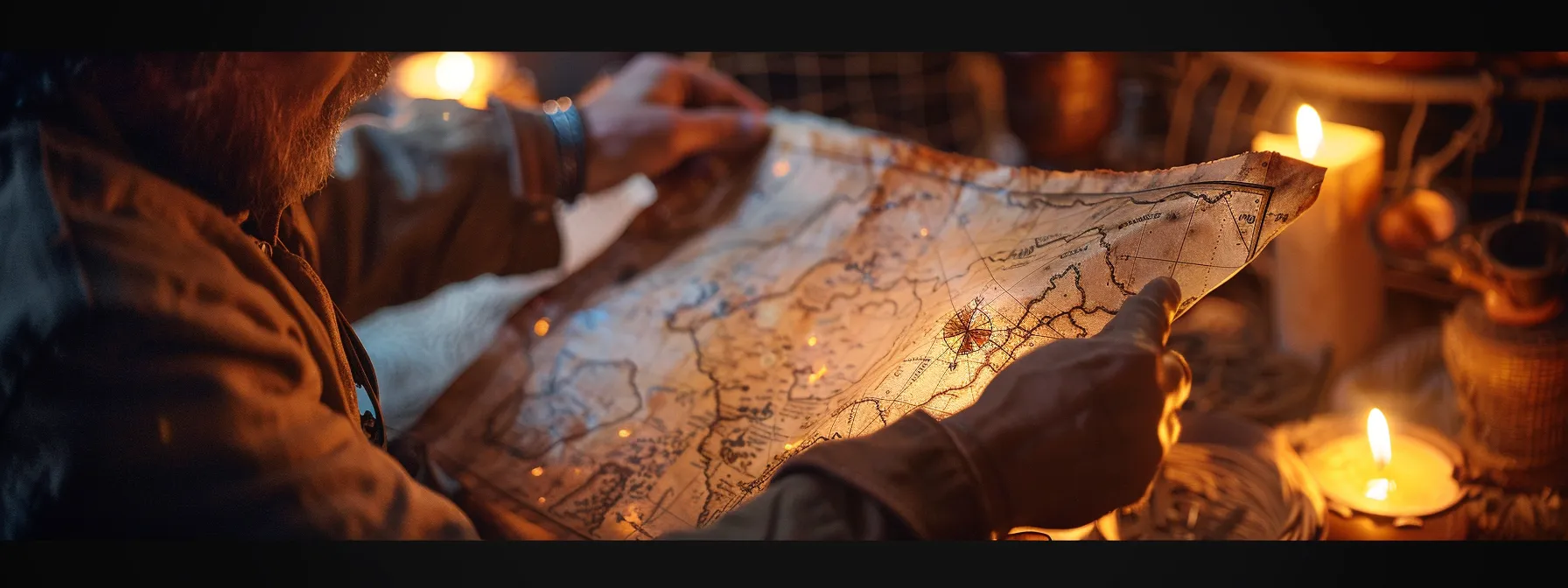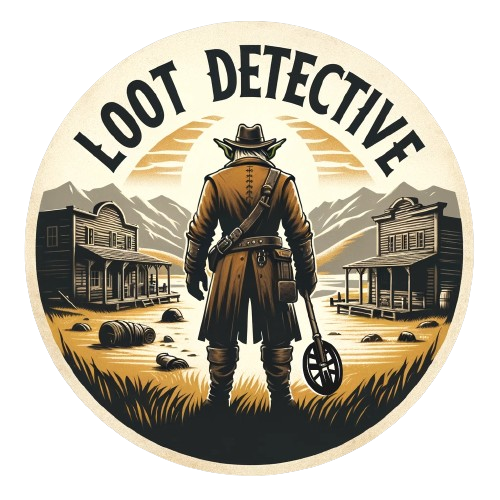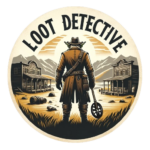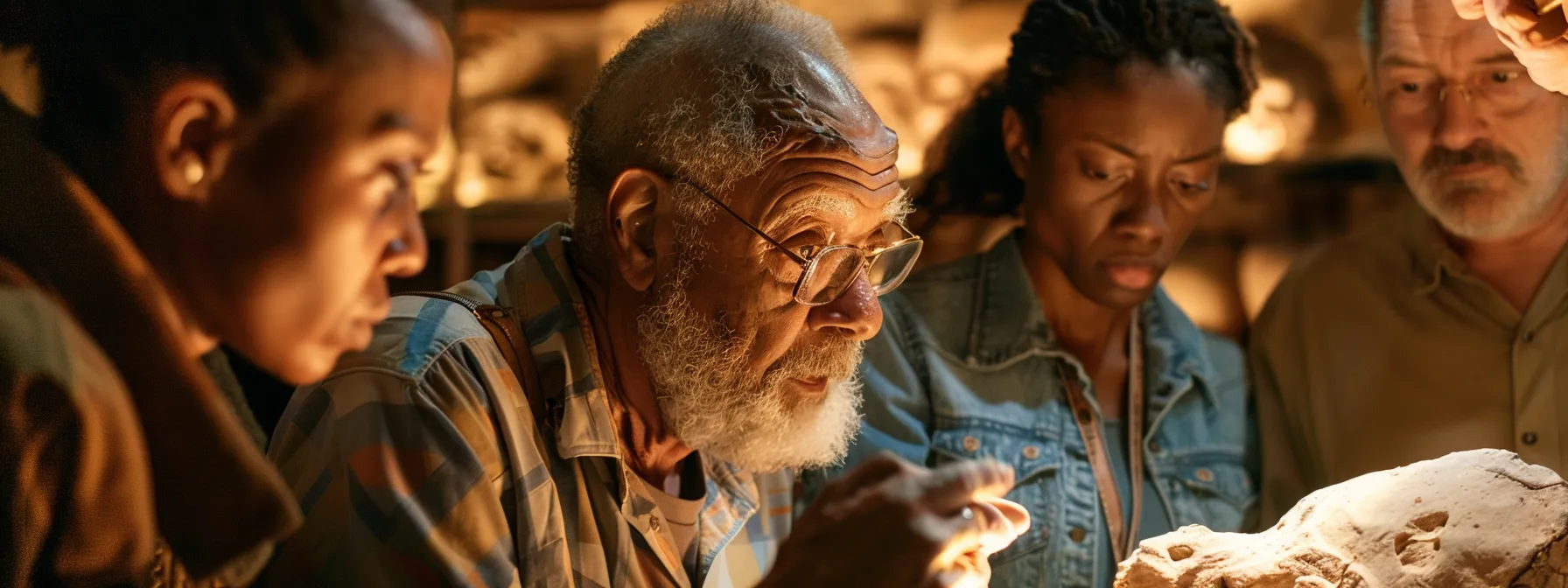

Have you ever wondered how ancient treasure hunters utilized their knowledge of archaeology and sailing to locate hidden riches? In this comprehensive guide on mastering ancient treasure hunting techniques, I will explore the roots of this captivating pursuit, discuss essential tools and methods from antiquity, and share strategies for interpreting historical clues. By the end, you’ll gain practical insights to enhance your treasure hunting adventures—whether you’re in the hills of West Virginia or sailing the open seas. Let’s tackle the challenge of discovering lost treasures together!
Key Takeaways
- understanding historical context enhances treasure hunting success significantly
- merging traditional techniques with modern technology improves treasure hunting efficiency
- folklore and local legends provide valuable clues about potential treasure locations
- safety measures and risk management are essential for successful treasure hunting expeditions
- collaborating with historians and experts enriches the treasure hunting experience and knowledge
Exploring the Roots of Ancient Treasure Hunting

Early motivations behind treasure hunts often stemmed from a desire for wealth, status, or survival. Myths and legends fueled these quests, leading adventurers to search for precious metals and artifacts across diverse landscapes. Notable discoveries, such as those during the California Gold Rush, shaped our understanding of treasure hunting. In the following sections, I’ll explore how these ancient practices impact modern treasure hunting techniques.
Early Motivations Behind the Quest for Treasures
About Us The quest for treasures has always been driven by various motivations, such as the pursuit of wealth and status. In ancient times, adventurers often sought out legendary treasures, believing that finding these artifacts would elevate their social standing or ensure their survival. For instance, tales of hidden gold mines in New Mexico drew many hopefuls to explore treacherous cliffs, leading them to use tools and techniques like sonar and dredging to locate elusive treasures.
The impact of these early motivations goes beyond individual gain. These treasure hunters set the stage for modern practices; the desire to unearth antique valuables created a foundation for techniques we still use today. As I researched the evolution of treasure hunting, I found that the relentless spirit of those early seekers continues to inspire both new and seasoned hunters alike. Understanding this history helps us appreciate our current methods and fuels our enthusiasm for the hunt:
- Pursuit of wealth and status
- Explorations in remote areas like New Mexico
- The use of technology, including sonar and dredging
- Discovery of legendary artifacts and antiques
- Influence on modern treasure hunting today
Influence of Mythology and Legends on Treasure Hunts
Throughout history, mythology and legends have fueled our passion for treasure hunting. In places like South Carolina, tales of sunken shipwrecks filled with gold and silver coins spark the imagination. The National Park Service often highlights these stories, reminding us that behind every hill or crevice might lie a hidden treasure waiting to be discovered, attracting both hobbyists and seasoned treasure hunters alike.
Notable Ancient Treasure Discoveries
Throughout history, notable treasure discoveries have captivated the imagination of treasure hunters and adventurers alike. One such discovery occurred in 1985 when the National Oceanic and Atmospheric Administration located the wreck of the Titanic. This metal vessel became a focal point for marine archaeology and provided valuable insights into the art of underwater recovery. As I studied these events, I realized that not only does mining history enrich our knowledge, but it also teaches us valuable lessons on the perseverance and ingenuity required to locate lost treasures.
Another remarkable find is the wreck of the Spanish galleon Atocha, which sank off the shores of Florida in 1622. As I researched its discovery in the 1980s, I was amazed by the sheer volume of gold and silver coins, along with artifacts, recovered from the site. This vehicle of fortune not only inspired numerous treasure hunters but also served as a testament to the importance of advanced technology in treasure hunting today. To truly appreciate these pursuits, it helps to recognize some key influences of these treasure hunts:
- Discovery of the Titanic by the National Oceanic and Atmospheric Administration.
- Recovery of treasures from the Atocha galleon.
- Use of advanced technology in modern treasure hunting.
Impact of Ancient Treasure Hunting on Modern Practices
The practices of ancient treasure hunters have significantly shaped modern prospecting and exploration methods. As a historian of treasure hunting, I’ve seen firsthand how techniques like mapping out potential sites and using simple metal detection have evolved into advanced gear equipped with sophisticated technology today. This blending of tradition and innovation not only enhances our chances of finding silver and other valuable artifacts but also drives a deeper appreciation for the history behind our discoveries.
Understanding the legacy of those early seekers allows us to refine our strategies. For instance, I often draw inspiration from their resourcefulness when planning my own expeditions. Techniques used by ancient hunters, such as analyzing historical records and paying attention to local lore, still provide invaluable insights into where to search today. By combining these age-old practices with modern tools, we can improve our treasure hunting skills and increase the likelihood of making remarkable finds.
As we trace the steps of those who sought hidden riches, we uncover the tools and methods they relied on. Knowing how they worked will guide us in our own hunts today.
Essential Tools and Methods From Antiquity

Essential tools and methods from antiquity played a significant role in the art of treasure hunting. I’ll be discussing primitive navigation techniques that guided early explorers, traditional excavation practices used to unearth artifacts, and the utilization of ancient maps and charts that provided valuable insights into potential treasure sites. Additionally, I’ll touch on communication and signaling methods that helped fishermen and treasure seekers alike coordinate their efforts when searching for hidden riches in places like Nevada.
Primitive Navigation Techniques
Primitive navigation techniques played a critical role in helping treasure hunters locate hidden treasures across vast landscapes. Early explorers relied on natural landmarks, like mountains and rivers, to guide their journeys, ensuring that they stayed on course while searching for gold or precious artifacts. For example, when hunting along the rugged coast of Oregon, I learned to use ships anchored in the bay as reference points, measuring the distance to treasures buried a mile inland, which often led to successful finds.
Furthermore, using simple tools, such as wire compasses made from clay and rocks, provided treasure hunters with basic directional guidance. This straightforward method was effective, especially when venturing into uncharted territories where clear paths were scarce. During my own treasure hunts, I often rely on similar principles and resources, constantly adapting to my surroundings while tracking potential sites. Understanding these ancient navigation methods can significantly enhance your treasure hunting experience:
- Using natural landmarks to navigate
- Reference points, such as ships, for locating treasures
- Simple tools like wire compasses made from clay
Traditional Excavation Practices
Traditional excavation practices have played a vital role in revealing treasures from the depths of soil and shipwrecks alike. When I think back to my adventures in New Jersey, I recall how careful digging techniques allowed me to uncover artifacts resting beneath layers of sediment. It was essential to approach each site with patience, using tools that not only minimized disturbance but also preserved the integrity of the find, showcasing the connection between the land and the history it holds.
In my experience, excavating involves not just the physical act of digging, but also understanding the context of each layer of soil. Each layer can tell a story about what’s above and below it, particularly around maritime archaeology sites where shipwrecks may lie. Employing systematic methods, such as documenting each depth and position, helps to create a trail of discovery that can lead to significant findings. This approach ensures that we honor the past while enhancing our skills as modern treasure hunters.
Utilizing Ancient Maps and Charts
Utilizing ancient maps and charts has been a critical element in my treasure hunting experiences. These navigational tools provide insights into the topography of a region, revealing potential treasure locations that modern maps may overlook. As I analyze old charts, I often find clues about historical trade routes or forgotten settlements, which are essential for planning a successful hunt and guiding new treasure seekers toward promising sites.
By conducting thorough research using these ancient documents, I have uncovered invaluable information that helps me identify the best areas for treasure hunting. For instance, I recall locating a treasure chest rumored to be buried near an old trading post by examining 18th-century maps. These maps not only highlight key landmarks but also illustrate how the landscape has changed over time, giving us modern navigators a deeper understanding of where and how to search for hidden riches. Here’s a quick summary of the importance of ancient maps:
- Reveal topography and historical routes essential for treasure hunting.
- Provide insights for planning expeditions and guiding hunters.
- Highlight landmarks that have historical significance in treasure quests.
Communication and Signaling Methods
Communication and signaling methods have long been vital to successful treasure hunting, especially when searching for hidden relics and hoards along the coast. In my own experiences, treasure hunters utilized simple yet effective strategies, such as smoke signals or reflective mirrors, to share information about potential finds with their teams. These methods kept communication flowing even in remote locations where modern devices might not reach.
Today, this tradition of communication still holds value, particularly when combined with modern technology. For example, when I’m hunting near the beach, my team and I often use walkie-talkies to relay signals about our discoveries, such as the readings we get from our metal detectors or even a magnetometer. Maintaining open lines of communication not only improves our efficiency but also enhances our chances of uncovering significant treasures:
- Using smoke signals for distance communication.
- Employing reflective mirrors to signal discoveries.
- Integrating modern tools like walkie-talkies in the field.
- Combining old methods with metal detectors and magnetometers.
Tools and methods of the past unlock many secrets. Now, we turn to the symbols and clues that whisper stories of history, waiting for us to listen.
Interpreting Historical Clues and Symbols

Understanding symbolism in ancient cultures is essential for every treasure hunter looking to make significant finds. I’ll discuss how to decode inscriptions and hieroglyphs, analyze artifacts for hidden messages, and share case studies of successful decipherments. These insights may help you identify treasures like gold coins, iron tools, or remnants buried beneath the sand or seabed.
Understanding Symbolism in Ancient Cultures
Understanding symbolism in ancient cultures is crucial for treasure hunters like us, especially when searching in regions rich with history, such as Kentucky. As I dig into the stories behind inscriptions and symbols, I often uncover meanings that can guide my search for treasures. For example, markings on found artifacts may indicate the presence of valuable items nearby, directing me to areas worth excavating. By keeping an eye out for these symbols, I can enhance my chances of making remarkable discoveries.
Additionally, decoding these symbols can provide insights into the practices of early treasure seekers. In my experiences, I’ve relied on old texts and local lore to interpret signs that hint at buried jewels or forgotten relics. When I come across unusual carvings while Digging a Plug Hole, I take a moment to analyze their significance. This approach not only enriches my understanding of the cultural context but also informs my digging strategy, ensuring I pursue the most promising leads in my treasure hunting endeavors.
Decoding Inscriptions and Hieroglyphs
Decoding inscriptions and hieroglyphs opens up a treasure trove of information for those of us on the hunt for hidden riches. In my experience, studying these ancient symbols can reveal clues about the environment or the presence of nearby treasures. For instance, I’ll often examine markings on stones or artifacts I uncover, as they may indicate where other treasure hunters have previously found success or highlight paths that lead to buried valuables.
To effectively decode these inscriptions, I recommend comparing them to known historical texts and seeking input from local historians or treasure hunting communities. This collaborative approach often leads to exciting discoveries as we piece together the puzzle of ancient cultures’ intentions. When I encountered mysterious carvings in a Kentucky site, my research revealed they pointed toward a nearby riverbank, which eventually yielded several valuable finds:
- Investigating the significance behind markings.
- Utilizing historical texts for comparison.
- Collaborating with local experts for deeper insights.
- Identifying potential treasure sites based on symbols.
Analyzing Artifacts for Hidden Messages
When analyzing artifacts for hidden messages, I often consider the context in which they were found. Each unique piece can contain clues about its origin or purpose, offering insight into the cultures that created them. For example, I once uncovered a small metal object adorned with intricate carvings near a historical settlement; upon researching similar finds, I realized it served as a marker indicating treasure buried nearby.
Decoding these artifacts requires a close examination of their features, including materials and shapes. I’ve learned to compare the items I find with reference books or online databases that catalog common treasure indicators. When I discovered a worn stone with symbols etched into its surface, I consulted local historians who helped me interpret its significance, ultimately guiding me to a successful treasure site. Here are some steps I follow when analyzing artifacts for hidden messages:
- Assess the context of the artifact‘s discovery.
- Examine the physical characteristics, like materials and designs.
- Use reference materials to compare similar artifacts.
- Collaborate with local experts for insights.
Case Studies of Successful Decipherments
One memorable case of successful decipherment occurred during my research on a site in Pennsylvania, where I discovered a stone tablet with unusual markings. After collaborating with a local historian, we determined that these symbols were linked to a forgotten Native American tribe known for their treasure legends. This revelation not only guided my excavation but also led to the discovery of several valuable artifacts hidden nearby, showcasing the power of understanding historical clues.
Another fascinating example involved a mysterious artifact I found while exploring an old battlefield in Kentucky. The object had peculiar engravings that seemed to tell a story. By studying similar pieces in museum collections and consulting with archaeological experts, I learned that these engravings pointed to an undiscovered cache buried by soldiers. This experience highlighted how thorough research and interpretation of historical symbols can profoundly enhance our treasure hunting endeavors.
Decoding clues from history sharpens our skills as treasure hunters. Now, let’s explore the best strategies to uncover the treasures hidden beneath our feet.
Strategies for Locating Hidden Treasures

Identifying prominent historical sites is a crucial first step in my treasure hunting adventures. By using geological indicators, I can assess the lay of the land for potential treasure locations. Additionally, folklore and oral traditions often hold valuable clues about buried relics. Collaborating with historians and archaeologists adds depth to my search, as their insights uncover hidden narratives that can lead to successful finds.
Identifying Prominent Historical Sites
When I search for hidden treasures, identifying prominent historical sites becomes a fundamental step. I often begin my journey by studying local history books and maps that highlight areas known for past settlements or significant events. For instance, exploring abandoned towns or locations near old trade routes can significantly enhance my chances of uncovering valuable artifacts, as these places tend to have rich histories intertwined with treasure hunting.
In my experience, connecting with local historians or joining treasure hunting clubs can provide invaluable insights into which sites are worth investigating. By sharing our knowledge and experiences, I gain a deeper understanding of the area’s historical significance. This collaboration not only enriches my treasure hunting adventures but also helps me develop a more strategic approach when I arrive at these potential treasure sites, ultimately increasing my likelihood of success.
Using Geological Indicators
Using geological indicators can significantly enhance my treasure hunting efforts, as these natural signs often reveal potential treasure locations. For example, I pay close attention to the terrain, such as river bends or hilltops where erosion might uncover hidden relics. Recognizing these geological features helps me narrow down areas worth exploring, increasing my chances of making exciting discoveries.
Furthermore, I leverage soil types and rock formations as key indicators of where treasures might be buried. Different soil compositions can suggest the likelihood of past human activity, such as settlements or burial sites. By analyzing these factors, I create a targeted approach to my expeditions that maximizes efficiency and effectiveness in locating hidden treasures:
- Study river bends and hills to identify potential excavation points.
- Analyze soil types to determine historical significance.
- Focus on areas with past human activity for better treasure prospects.
Assessing Folklore and Oral Traditions
Assessing folklore and oral traditions is a crucial aspect of my treasure hunting strategy. Often, local stories and legends hold valuable clues about hidden treasures, such as lost mines or buried relics. For instance, during a hunt in a small town, I learned from an elderly resident about a legendary hoard buried by gold rush miners. This insight not only guided my search area but also helped build a connection with the local community, which can sometimes yield even more information.
Throughout my experiences, I’ve discovered that folklore often reflects historical events, providing a unique perspective on potential treasure locations. While hunting near an old battlefield, I encountered several accounts of hidden caches left behind by soldiers. By tracking down these stories and assessing their validity, I’ve successfully identified several promising sites that align with local lore. Engaging with these narratives not only enriches my treasure hunting adventures but also transforms the hunt into a fascinating exploration of history and culture.
Collaboration With Historians and Archaeologists
Collaborating with historians and archaeologists has greatly enriched my treasure hunting experience. These professionals often possess a wealth of knowledge about local history and archaeological sites that can significantly inform my search. For example, I once teamed up with a local historian to investigate an old mining area, uncovering documents that hinted at hidden artifacts likely left behind by early miners. This collaboration not only guided my focus but also deepened my understanding of the site’s history.
In my adventures, I’ve found that building relationships with these experts opens up new avenues for exploration. They often know the stories behind the land and can point out locations that may not be on modern maps. By sharing insights with them, I have been able to locate promising treasure sites that many others might overlook, ensuring that my treasure hunting efforts are grounded in historical accuracy. This partnership is invaluable for seekers looking to improve their methodology and increase their chances of success.
Treasure hunting has always been a dance between past and present. By blending ancient techniques with today’s tools, we unlock new paths to hidden riches.
Adapting Ancient Techniques in Modern Treasure Hunting

In modern treasure hunting, I find it essential to merge traditional methods with advanced technology. By learning from historical expeditions, we can refine our searching techniques and uncover lost artifacts. Additionally, we must consider ethical practices to preserve historical integrity while benefiting from these ancient techniques. Each of these areas offers practical insights that enhance our treasure hunting experiences.
Merging Traditional Methods With Modern Technology
Merging traditional methods with modern technology has transformed my treasure hunting expeditions significantly. For instance, while I still rely on the teachings of early explorers—like using natural landmarks for navigation—I also utilize GPS devices to pinpoint potential treasure locations more accurately. This combination allows me to honor the rich history of treasure hunting while enhancing my efficiency in the field.
In my own experience, employing advanced tools, such as metal detectors equipped with discrimination features, has improved my success rate dramatically. These detectors help me filter out unwanted metal, allowing me to focus on items that are likely to be valuable. By blending age-old techniques with cutting-edge technology, I enhance not only my chances of making significant discoveries but also ensure a more fulfilling treasure hunting adventure.
Learning From Historical Expeditions
Learning from historical expeditions has greatly shaped my approach to treasure hunting. I often study accounts of past explorers who faced challenges similar to those we encounter today. For example, their use of patience and detailed record-keeping during their searches highlights the importance of meticulous planning in uncovering hidden treasures. By reflecting on their strategies, I’ve adapted my own methods, ensuring that I’m equipped to navigate the complexities of modern treasure hunting.
Historical expeditions also provide valuable lessons about the tools and techniques they employed. For instance, I’ve noticed that many successful treasure hunters relied on local knowledge and folklore to guide their searches. By integrating these insights into my expeditions, I can pinpoint locations with a higher likelihood of yielding valuable artifacts. This blend of ancient wisdom and practical application not only enhances my treasure hunting skills but also deepens my connection to the rich history we explore.
Ethical Considerations in Applying Ancient Practices
When I consider the ethical implications of using ancient treasure hunting techniques, I find it vital to respect the historical significance of the sites we explore. Many areas hold cultural and archaeological value, and non-invasive methods should be prioritized to avoid disturbing these treasures. For instance, rather than excavating directly, I often rely on metal detecting or surface surveying to uncover artifacts without causing harm, ensuring that the integrity of the site is preserved for future generations.
Additionally, I encourage collaboration with local communities and historians to gain insights about the significance of a location. This partnership not only fosters good relationships but also ensures that our hunting practices are sensitive to the cultural narratives tied to the area. By following these ethical guidelines, I aim to honor our shared history while enhancing my treasure hunting adventures:
- Prioritize non-invasive exploration methods.
- Collaborate with local communities and historians.
- Respect the cultural significance of sites.
Preservation of Historical Integrity
When treasure hunting, I prioritize the preservation of historical integrity. Each site I explore holds stories and cultural significance that deserve respect. By using non-invasive techniques like metal detecting or surface surveying, I can uncover artifacts while ensuring the locations remain intact for future generations. This approach allows me to enjoy the thrill of discovery without compromising the archaeological value of the sites I encounter.
Respecting historical integrity also involves collaborating with local communities and historians. Engaging with these experts can lead to a deeper understanding of the significance of a location. Their insights help guide my treasure hunting practices, ensuring I honor the cultural narratives tied to each area while enhancing my adventures.
- Prioritize non-invasive exploration methods.
- Utilize metal detecting for artifact recovery.
- Collaborate with local communities and historians.
- Respect cultural significance of historical sites.
Now that we’ve seen how ancient techniques can guide our searches, it’s time to prepare for our own adventures. Gather your gear and get ready; the thrill of discovery awaits us in the field.
Preparing for Your Own Treasure Hunting Expedition

When preparing for your treasure hunting expedition, I focus on several essential elements. First, I research the historical context of my chosen location to uncover potential treasure sites. Next, I gather the necessary equipment, ensuring I have the right tools for the hunt. Developing a strategic plan helps me target areas efficiently, while implementing safety measures and risk management keeps my explorations secure. These organized steps will enhance your treasure hunting experience.
Researching Historical Context
Researching the historical context of your chosen treasure hunting location is essential for increasing your chances of a successful expedition. I often start my exploration by diving into local history books, online archives, and newspapers to understand the events that shaped the area. Knowing the background can reveal important clues about where treasure might be hidden, such as abandoned mines or battlefields where soldiers buried valuables.
When I focus on a particular region, I pay close attention to oral histories and local legends recounting tales of buried treasures. These stories may lead to overlooked spots that don’t appear on modern maps. By gathering as much historical information as possible, I can create a detailed plan that highlights potential treasure sites, making my hunting experience more efficient and rewarding:
- Study local history books and archives.
- Explore online resources to gather data.
- Engage with local historians for insights.
- Investigate oral histories and legends.
- Create a plan targeting identified treasure sites.
Gathering Necessary Equipment
Gathering the necessary equipment for your treasure hunting expedition is crucial for maximizing your success. I recommend starting with a reliable metal detector, as this tool forms the backbone of any treasure hunt. Choose a model that suits your experience level and the type of terrain you’ll cover. In my experience, investing in a quality detector with adjustable settings can make a significant difference when searching for specific types of treasures. Pair this with appropriate digging tools—like a sturdy shovel and a trowel—to ensure you can excavate efficiently without damaging your finds.
In addition to basic tools, having the right safety gear is essential. I always carry gloves, a first aid kit, and weather-appropriate clothing to stay prepared for any circumstances I might encounter in the field. It’s also wise to have a notebook for recording your findings and observations, which can aid in future hunts. By gathering the right equipment and preparing meticulously, you not only enhance your chances of unearthing valuable treasures but also ensure a smoother, more enjoyable adventure.
Developing a Strategic Plan
Developing a strategic plan for your treasure hunting expedition is essential for maximizing potential finds. I always begin by identifying my target location and conducting thorough research on its historical significance. This allows me to pinpoint areas where treasures may have been buried or hidden, based on past events or local lore. By understanding the context of my chosen location, I can create a focused approach that guides my search effectively.
A strategic plan also includes defining specific goals for the hunt, such as the types of treasures I hope to find or particular sites I want to explore. I often create a checklist that outlines my objectives, equipment needs, and safety precautions, ensuring I’m well-prepared for the adventure ahead. This structured approach not only enhances my chances of success but also helps me stay organized and engaged during the hunt:
- Identify target locations based on historical significance.
- Conduct thorough research to pinpoint potential treasure sites.
- Define specific goals and desired treasure types.
- Create a checklist of equipment and safety measures.
- Stay organized and focused throughout the expedition.
Safety Measures and Risk Management
When I’m preparing for a treasure hunting expedition, safety measures and risk management are top priorities. I always take time to assess the location for potential hazards, such as uneven terrain, water bodies, or wildlife encounters. Having a basic first aid kit is essential for dealing with minor injuries, and I ensure I wear appropriate clothing and sturdy footwear to protect myself from the elements. It’s vital to stay aware of my surroundings and the specific risks associated with the area I’ll be exploring.
I also believe in the importance of informing someone about my plans before heading out. Sharing details about my expedition location and expected return time adds an extra layer of safety in case anything goes wrong. Additionally, I carry a fully charged phone for emergencies, as well as a map and compass for navigation in case my technology fails. By implementing these simple safety measures, I can focus on the excitement of the hunt while minimizing risks:
- Assess the location for potential hazards.
- Carry a basic first aid kit for minor injuries.
- Wear appropriate clothing and sturdy footwear.
- Inform someone about my plans before heading out.
- Carry a fully charged phone for emergencies.
- Use a map and compass for navigation.
Conclusion
Mastering ancient treasure hunting techniques is crucial for modern enthusiasts seeking to enhance their skills and uncover hidden gems. By understanding the motivations behind historical quests and utilizing traditional methods alongside advanced technology, you can significantly improve your chances of success. Engage deeply with local lore, historical context, and the ethical practices that preserve our rich cultural heritage. Embrace these insights to make your treasure hunting adventures not only fruitful but also respectful of the history we seek to unveil.


